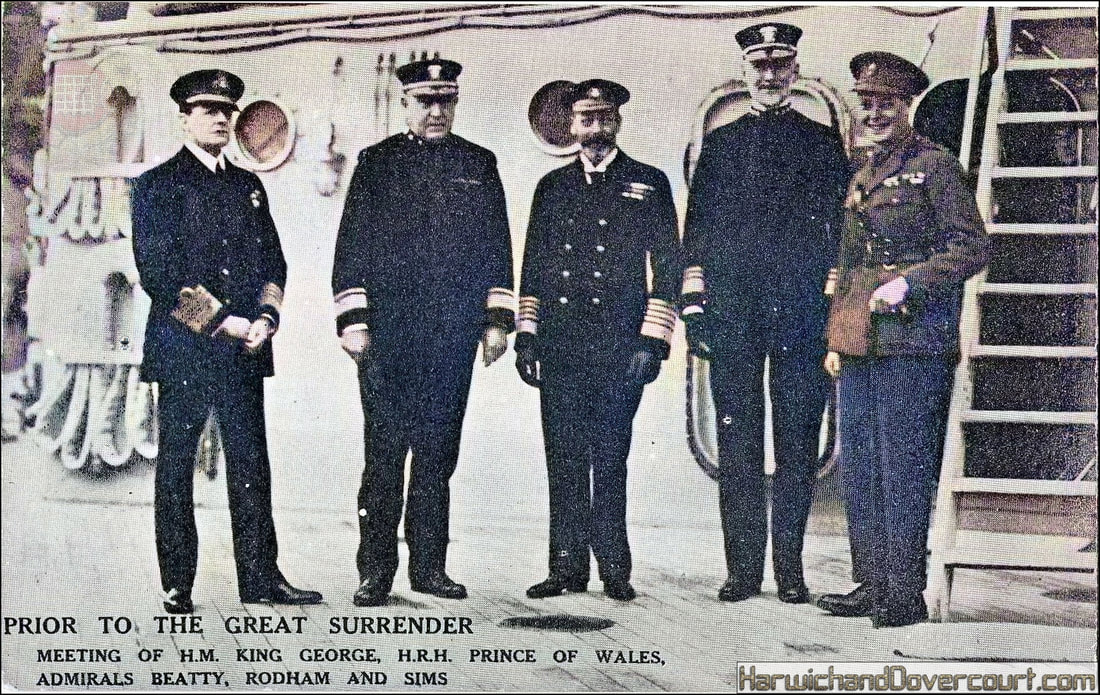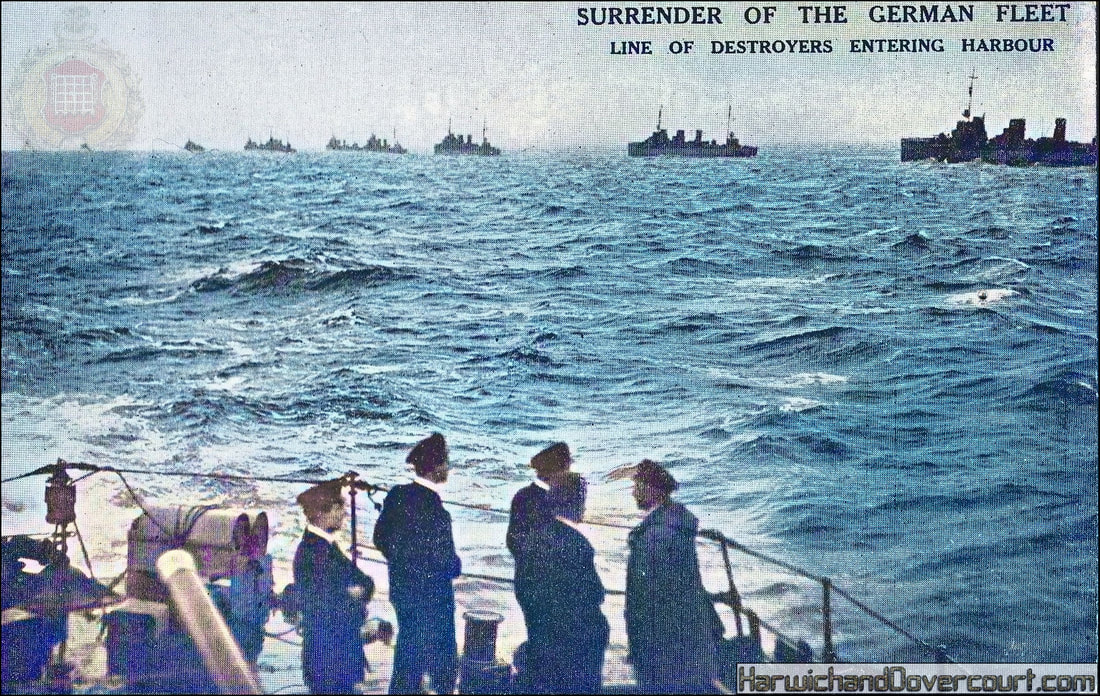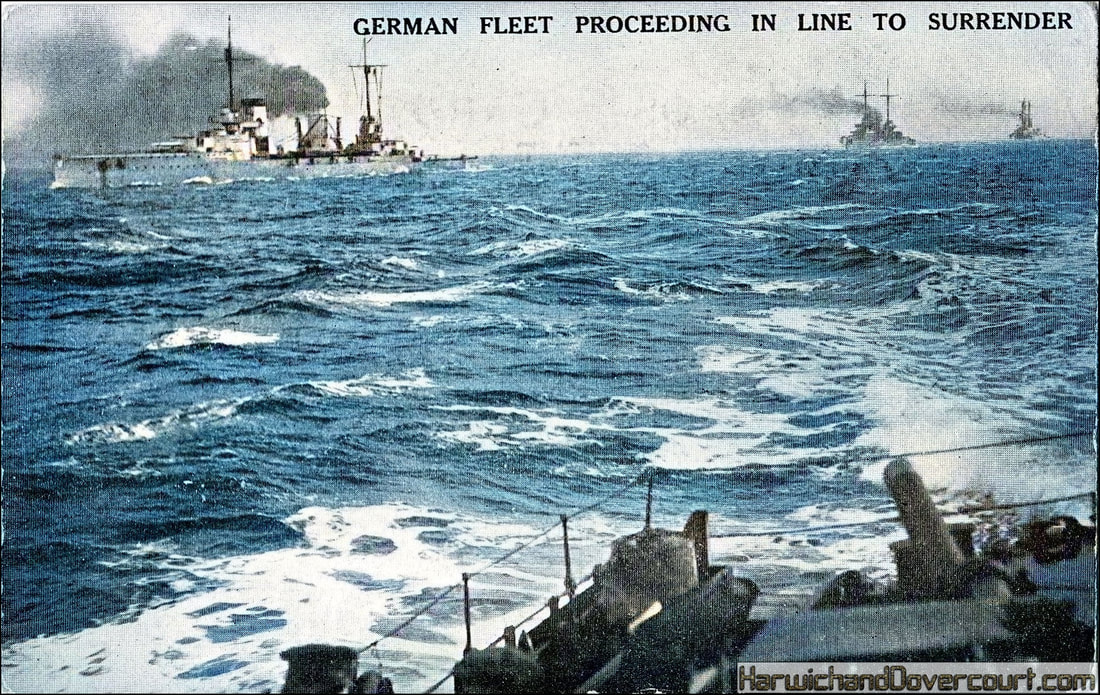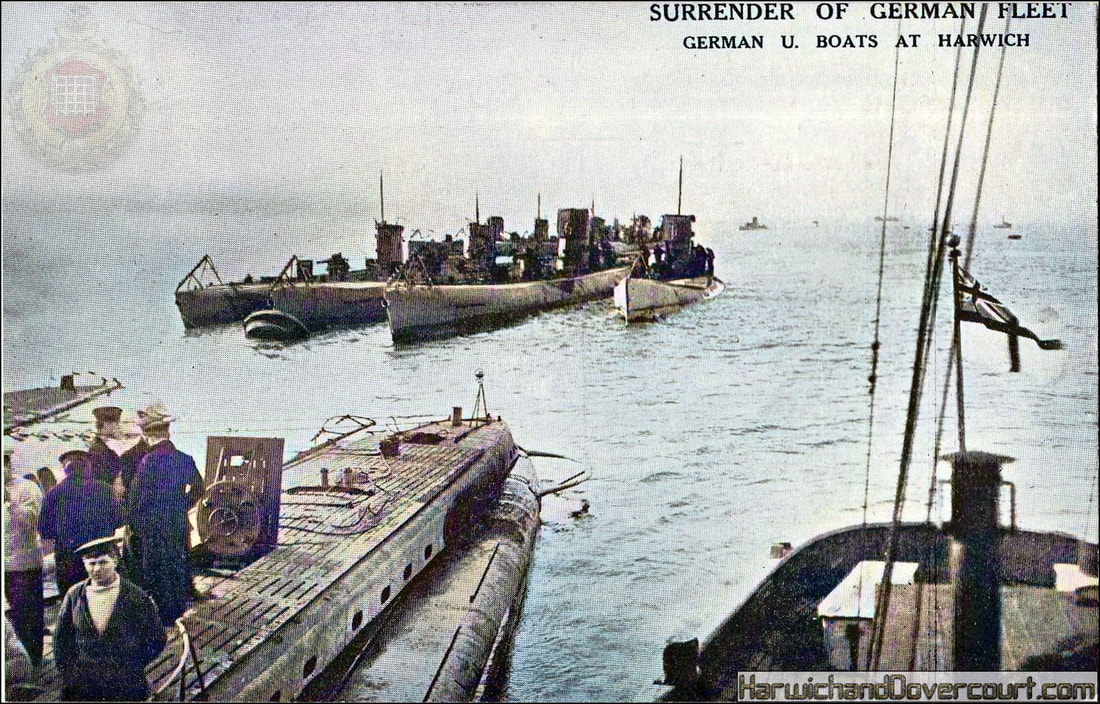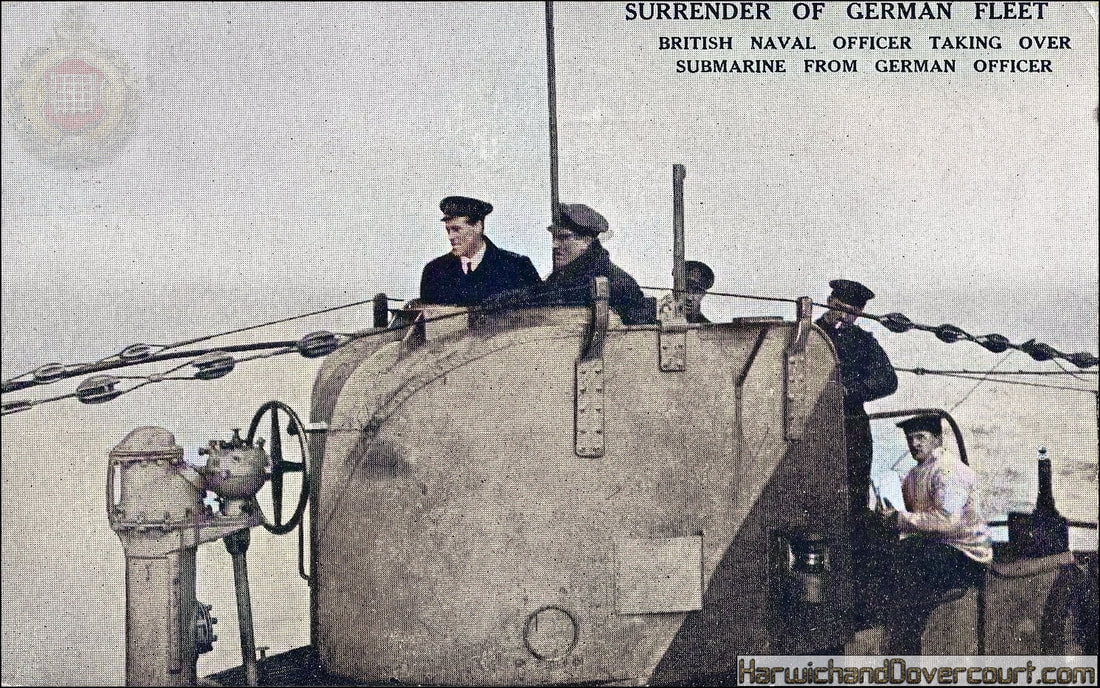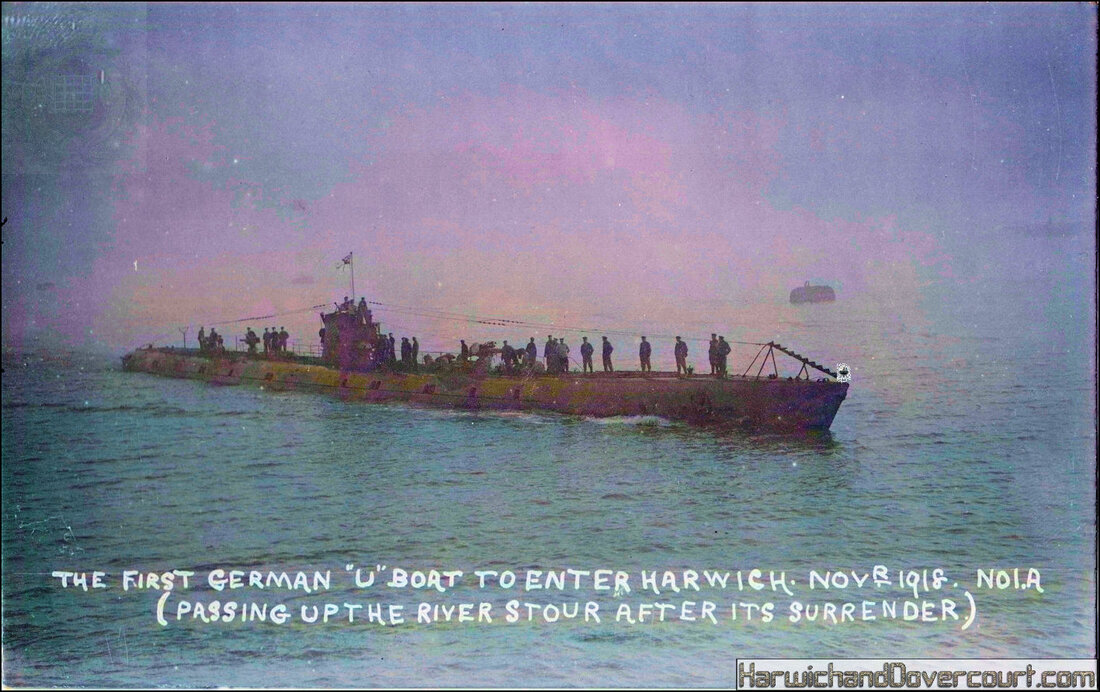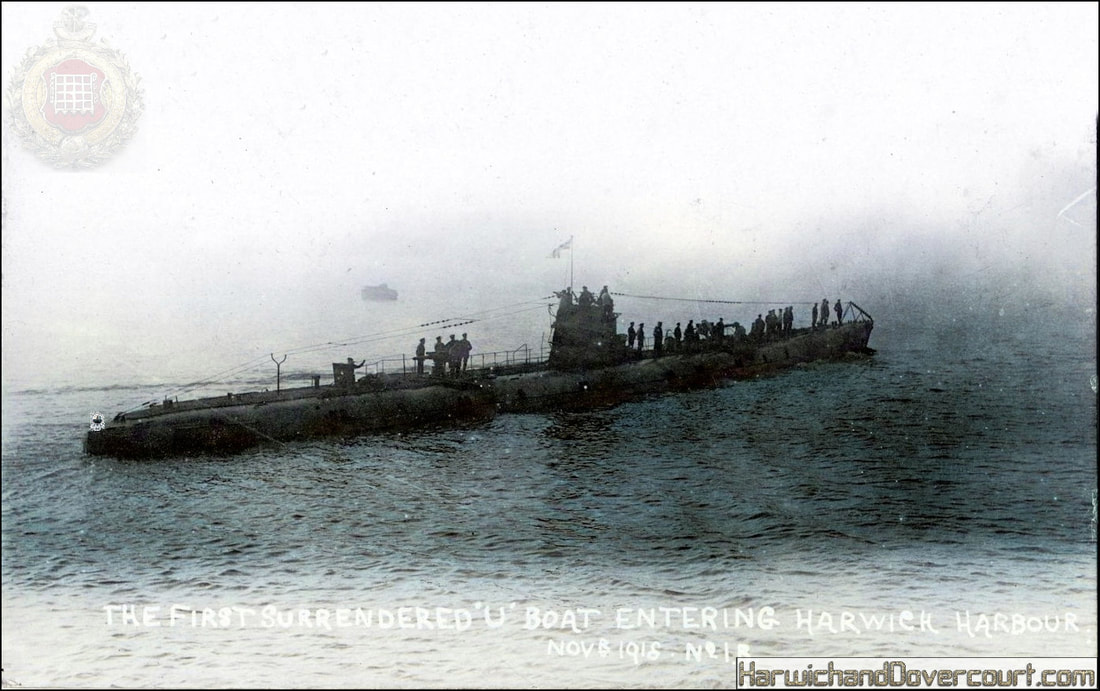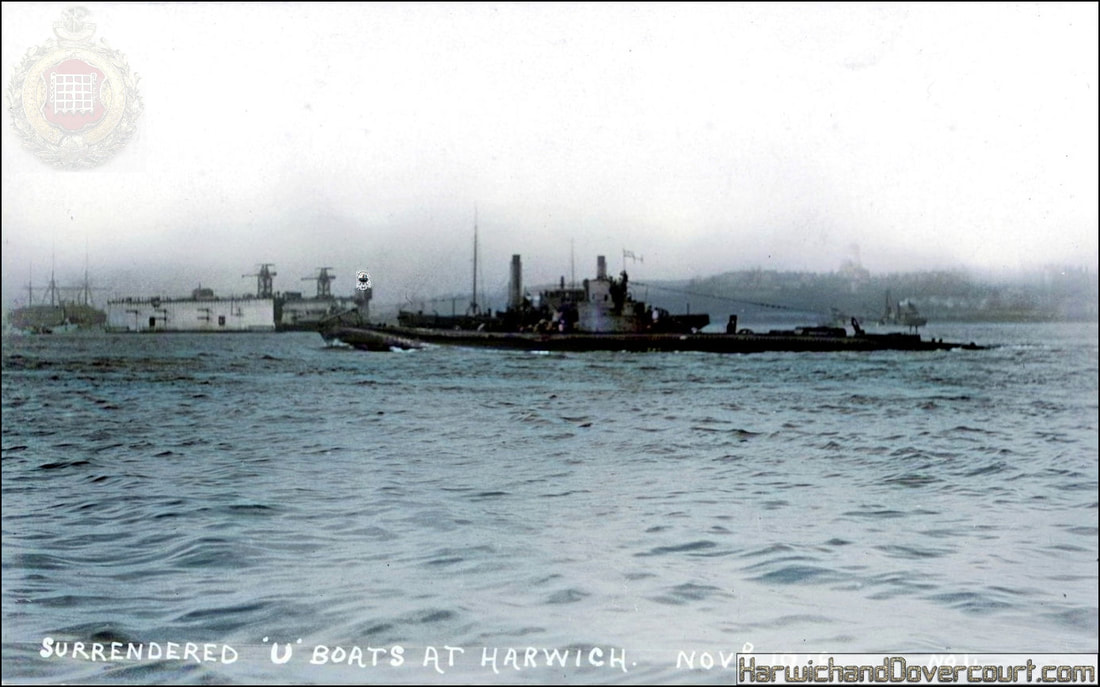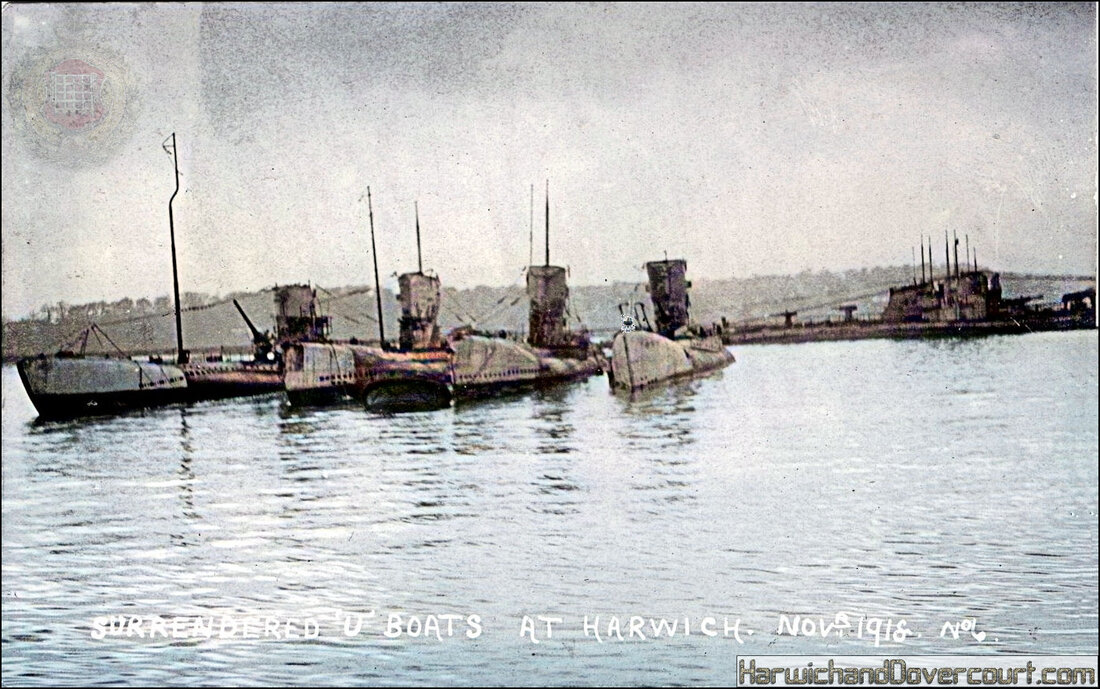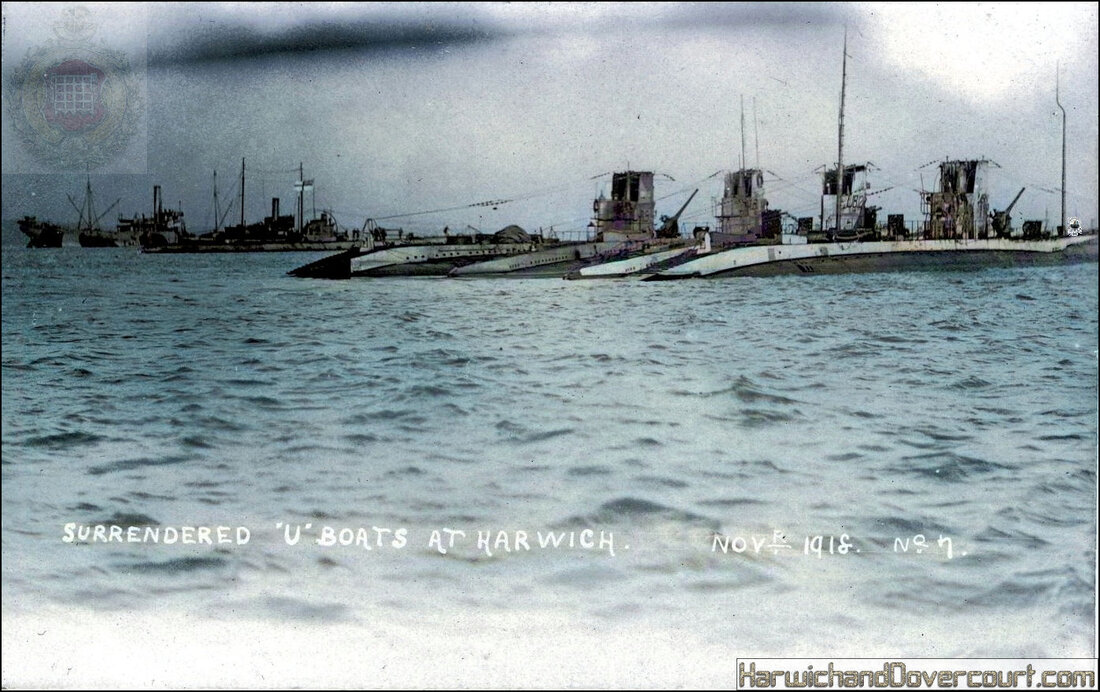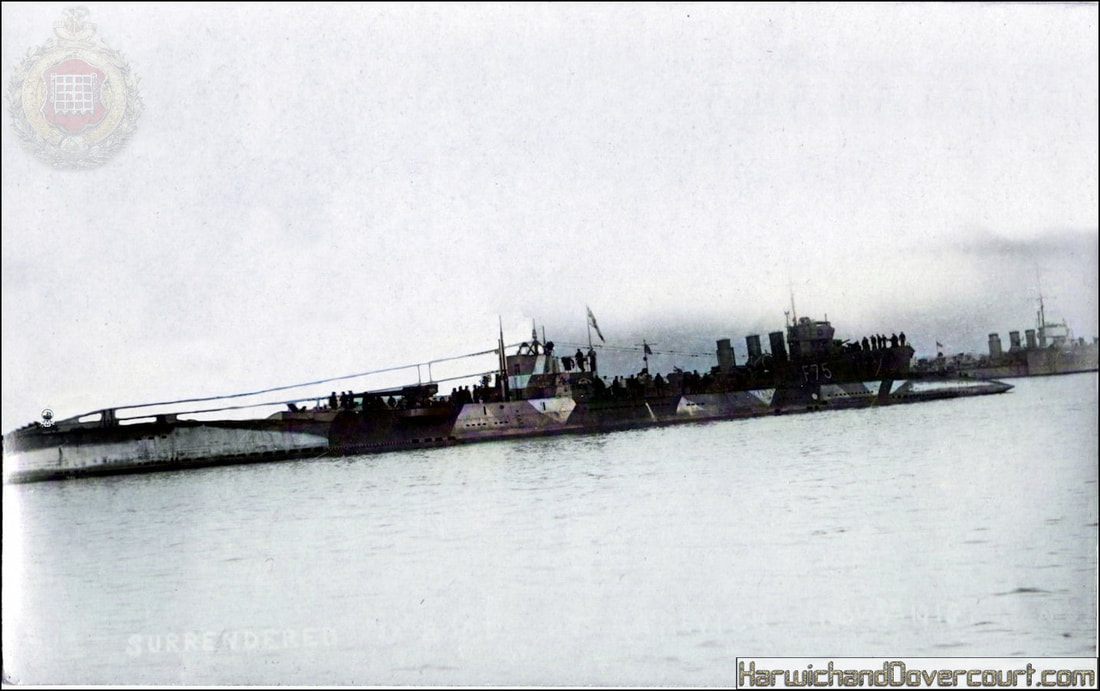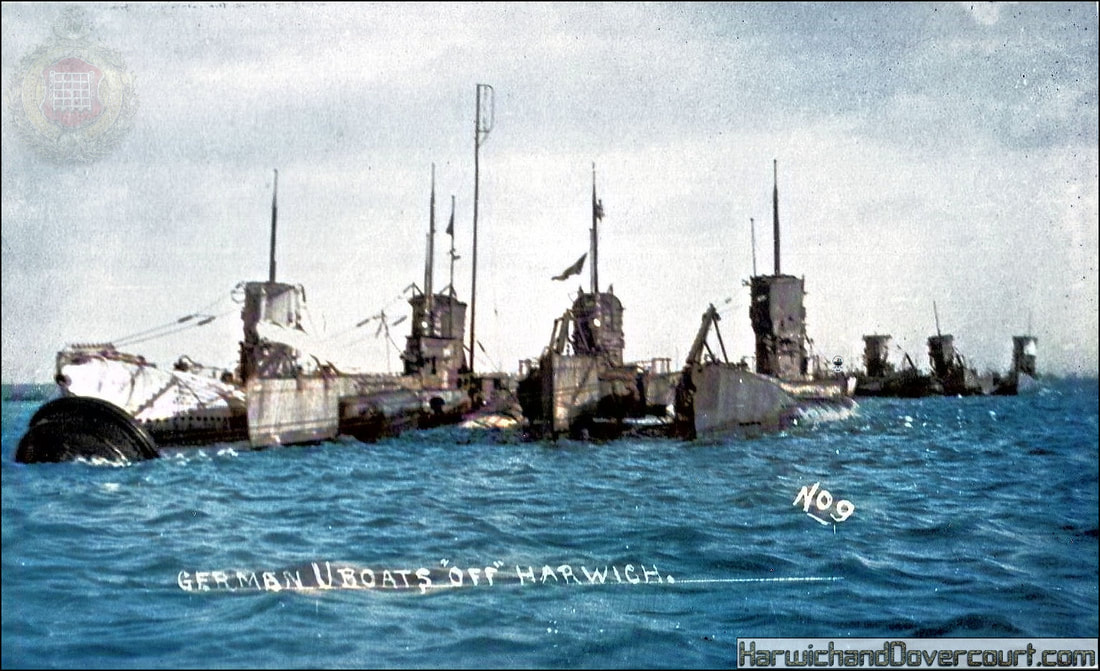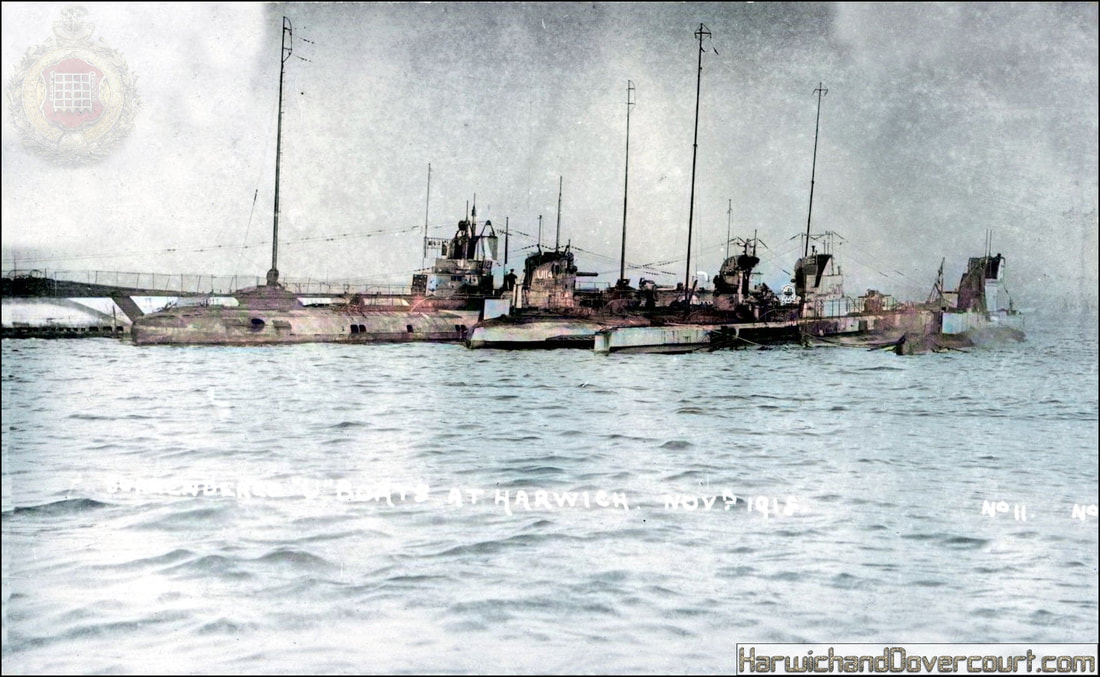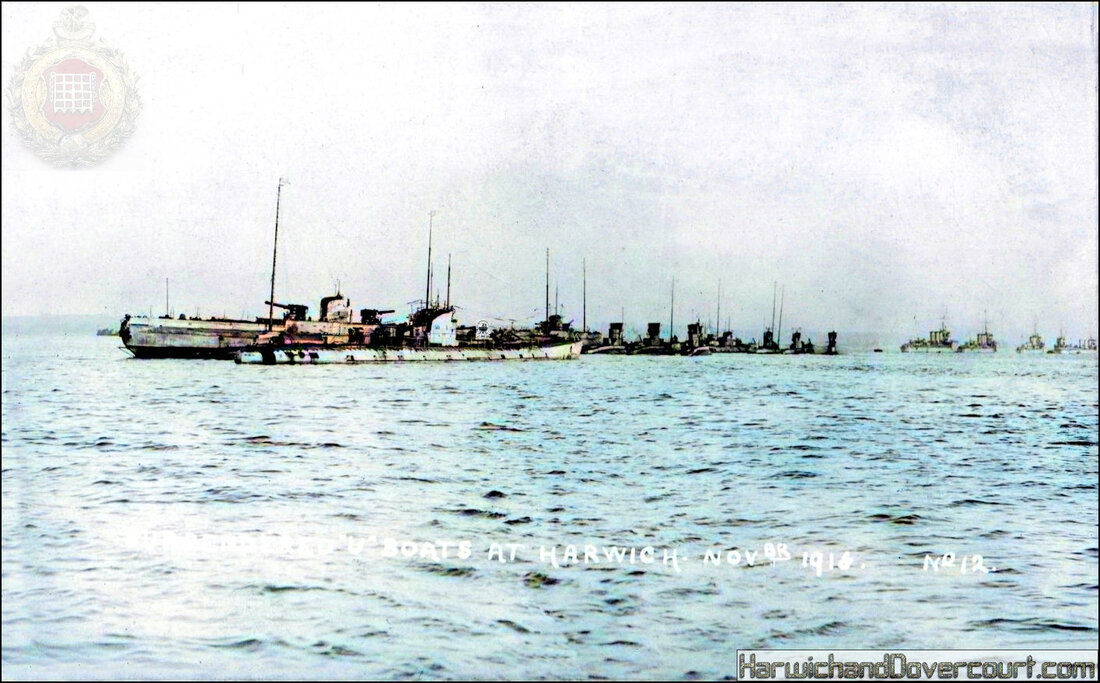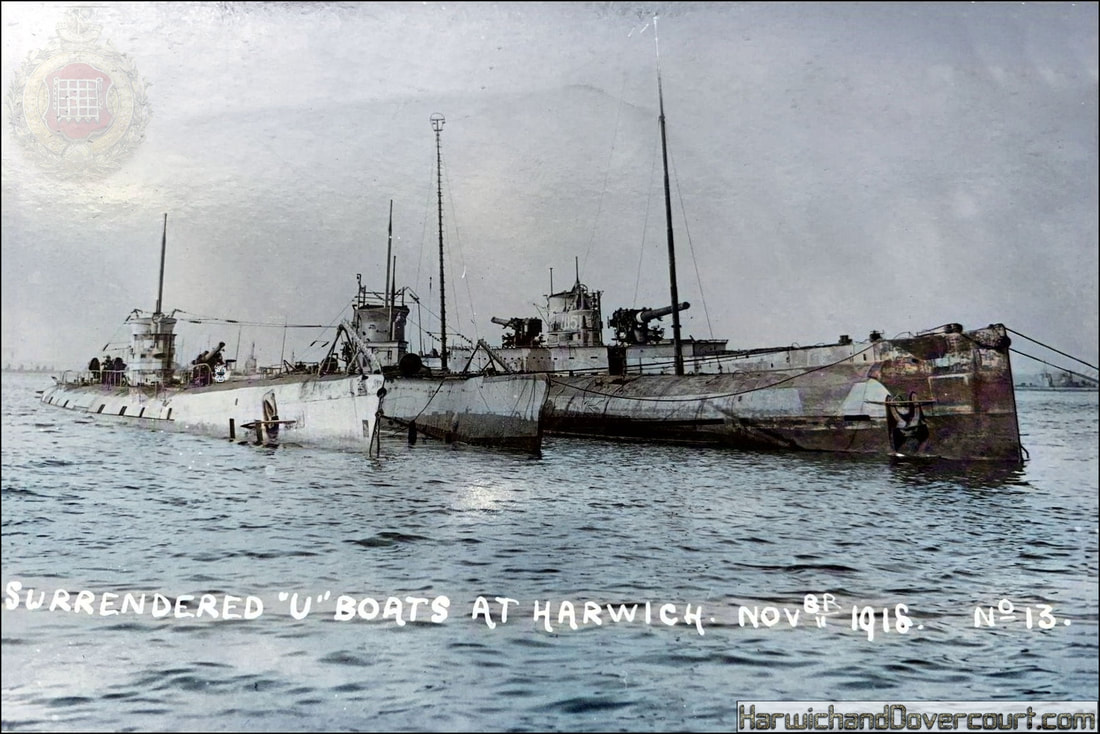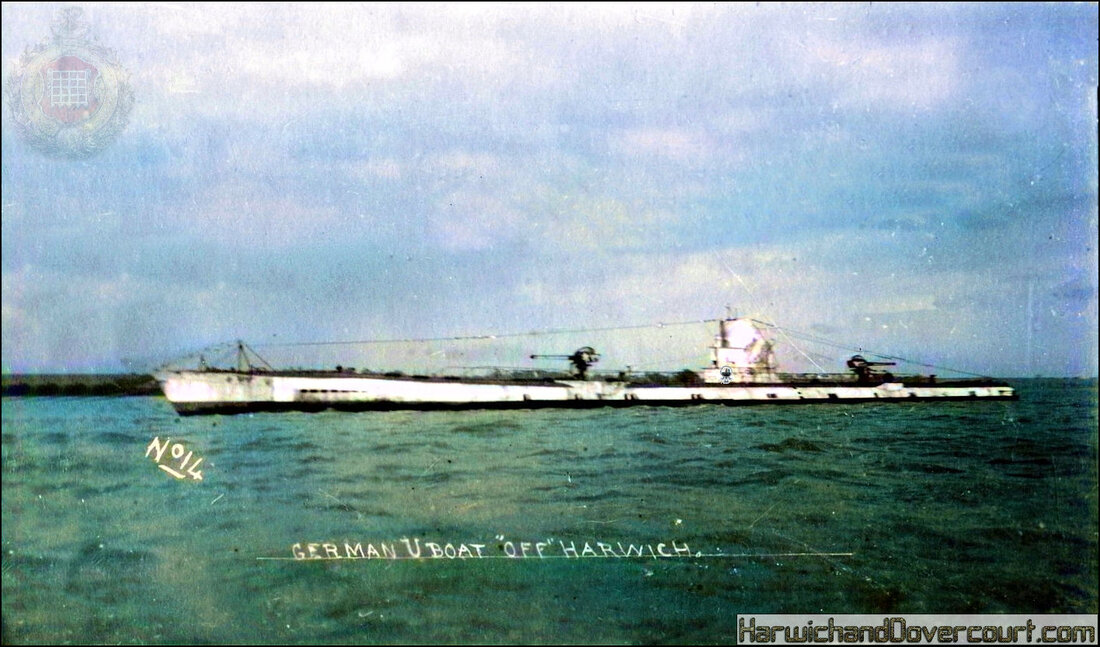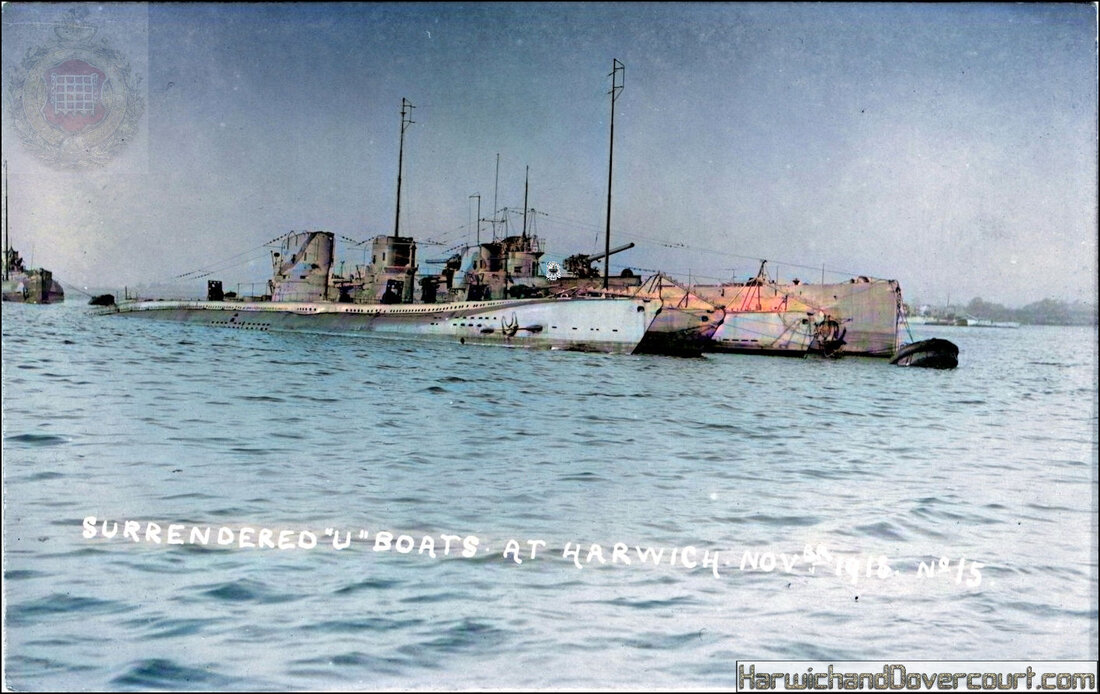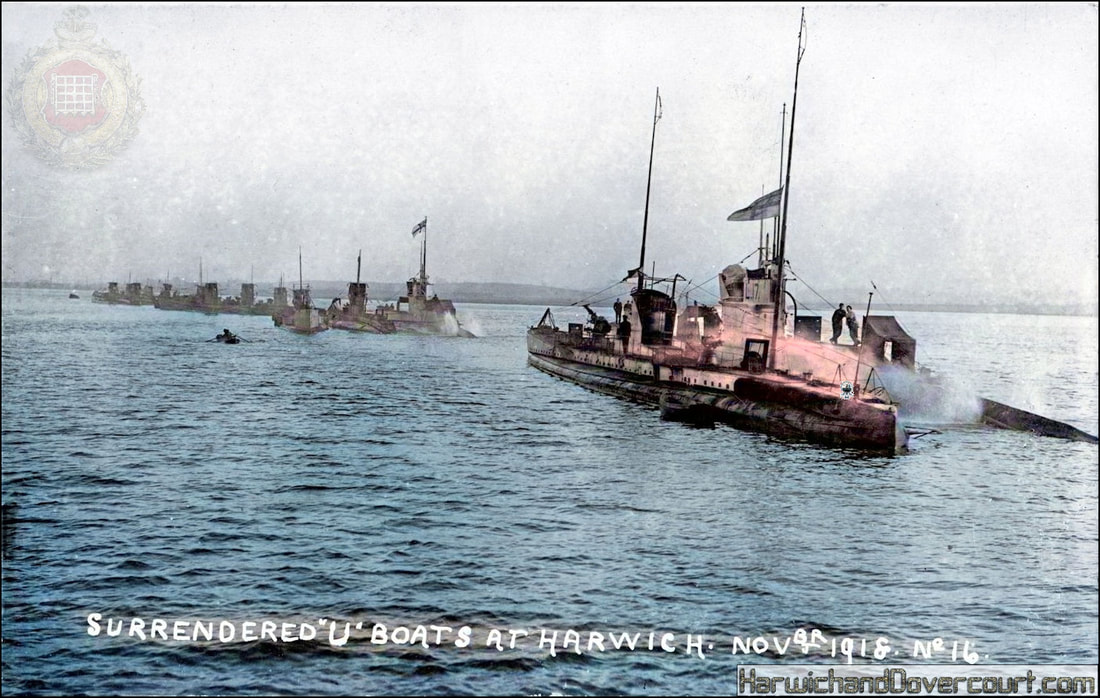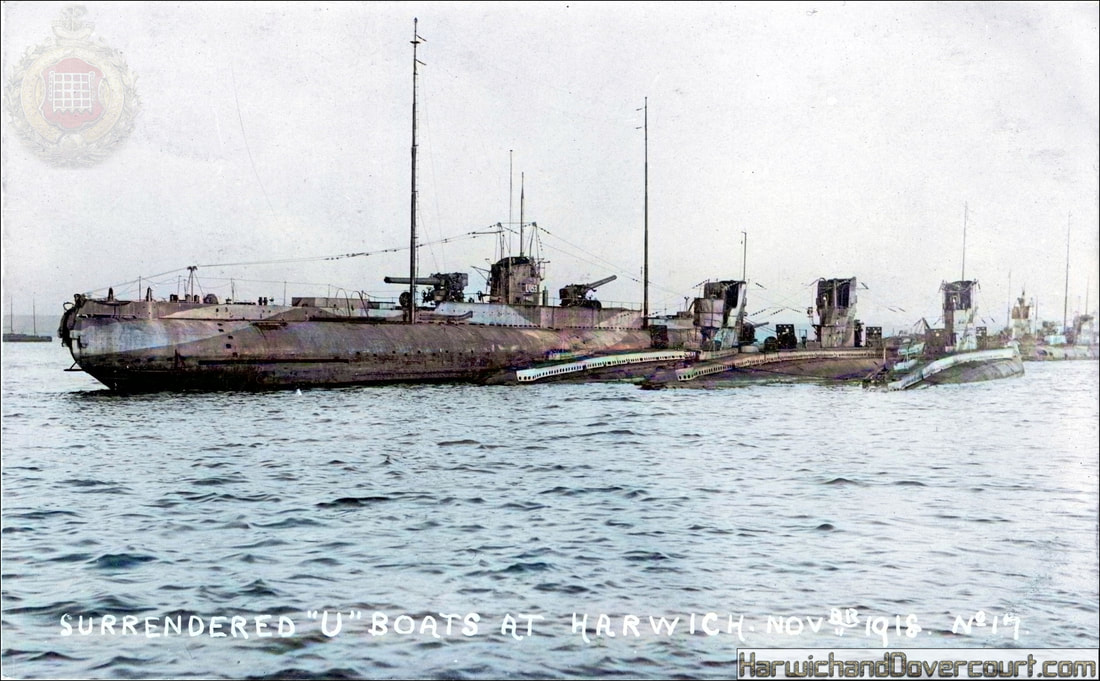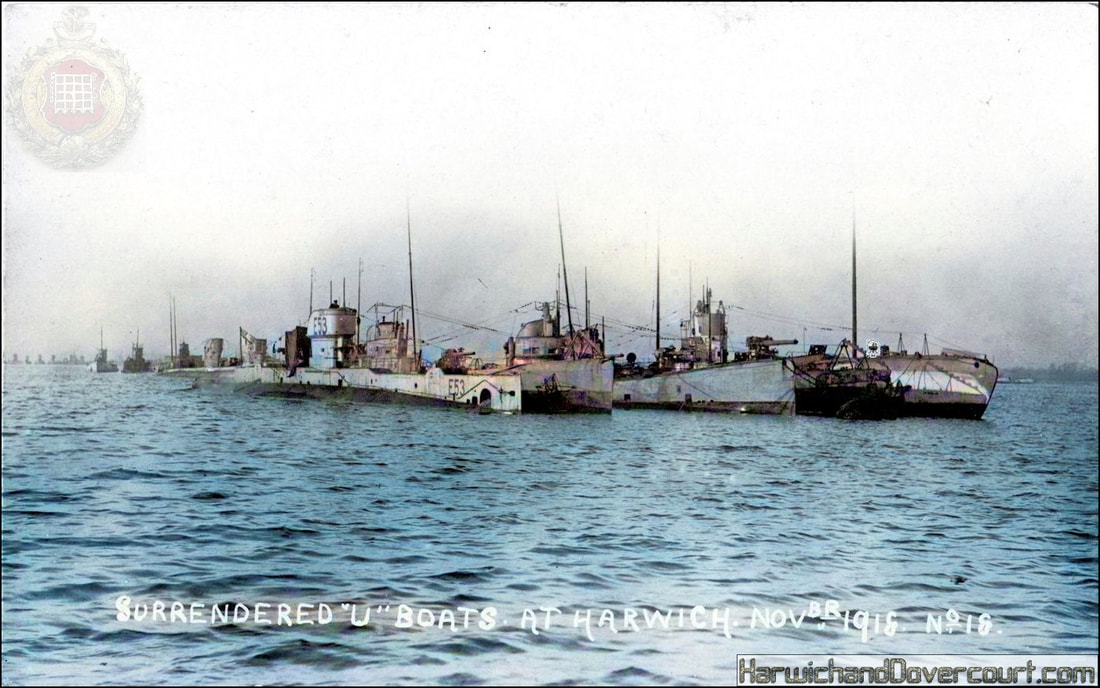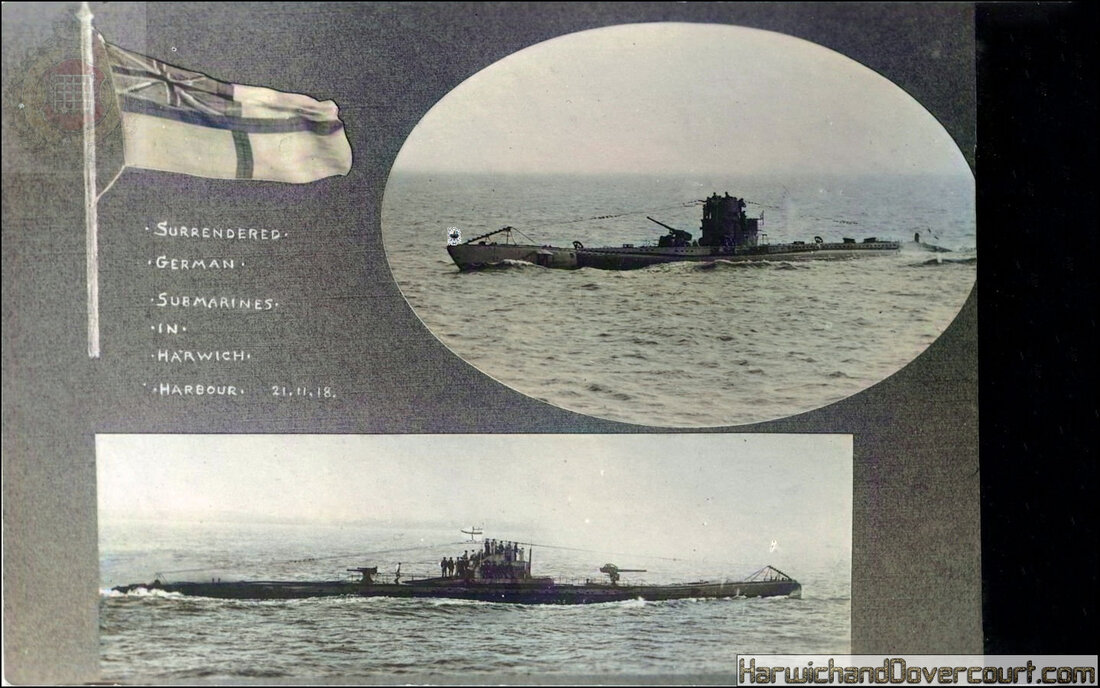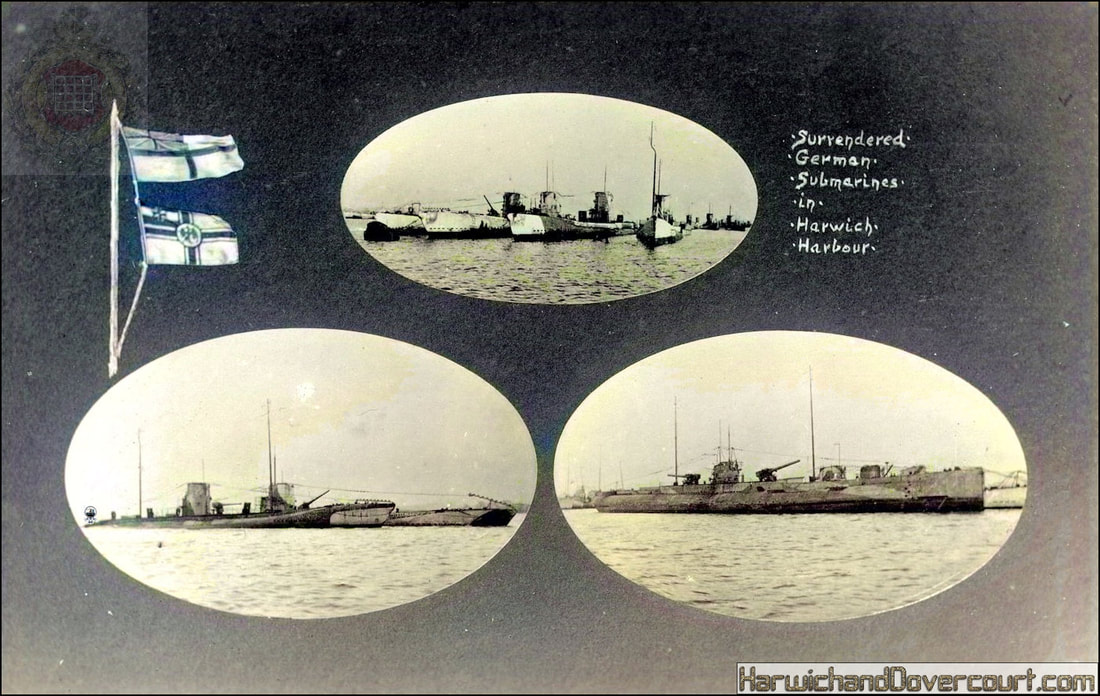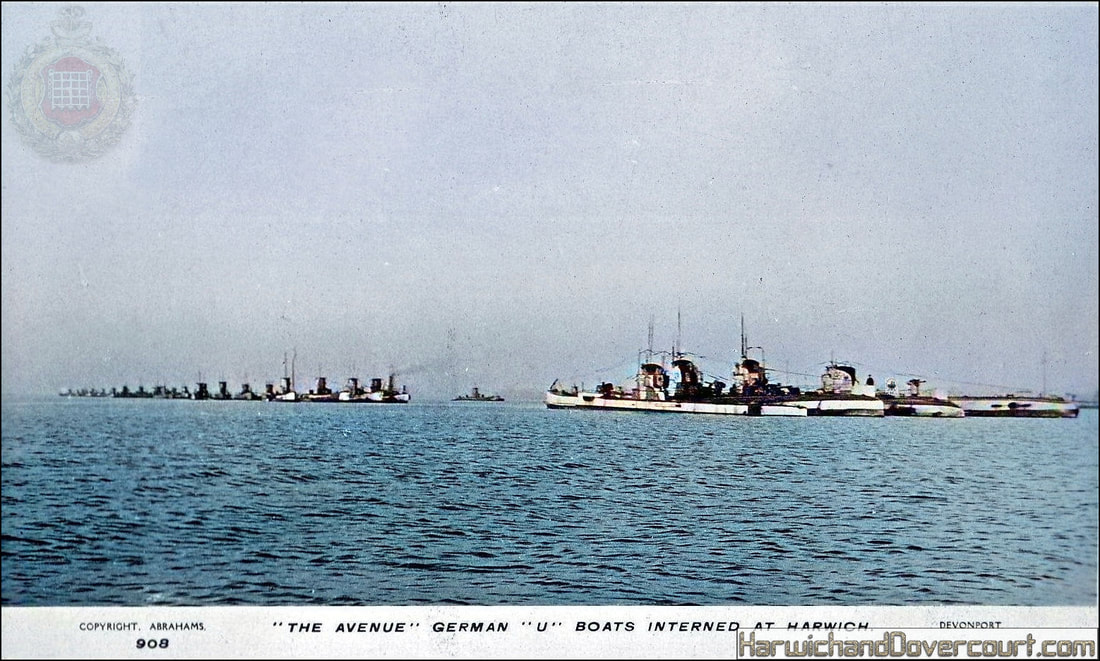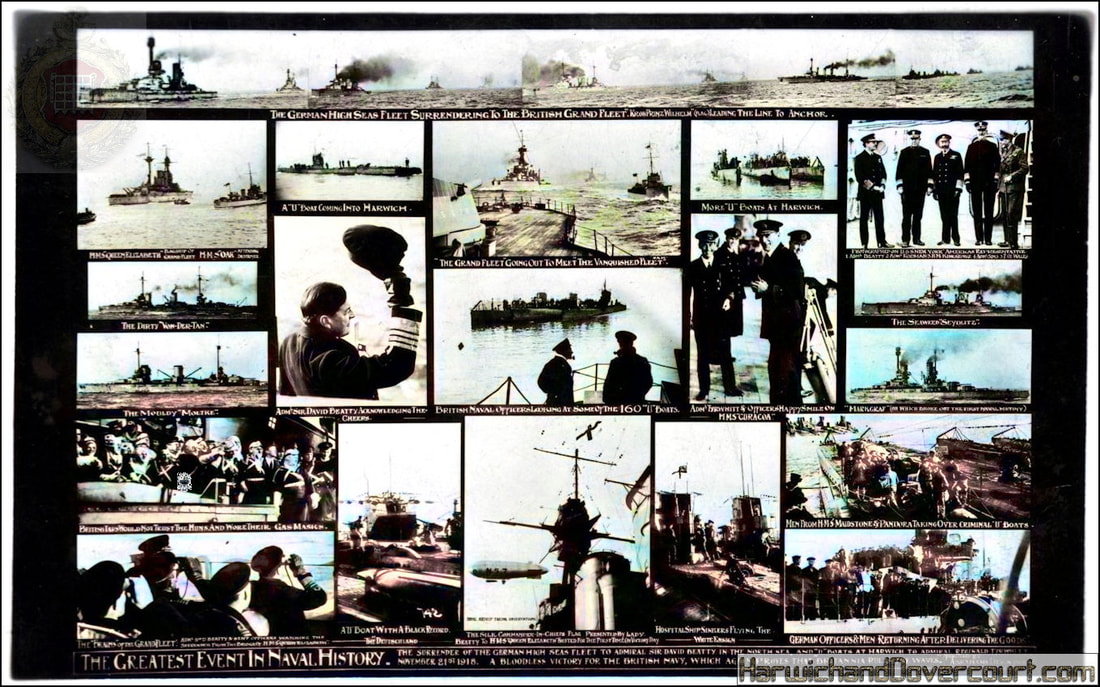Section 1 ~ Valentines, H.R. Tunn & Co & Abrahams of Devon
Over 100 years ago in 1918, there was a mass surrender of Germany's submarines on the Essex coast at the end of World War One.
More than 160 U-boats surrendered at Harwich in November 1918, at one point stretching in a two-mile (3km) line. While most were taken to go on display, many were left beached at Harwich before being sunk or taken by the sea.
U-boats were moored three-to-four-abreast on the north bank of the River Stour
The crew members of the U-boats, who would have boarded a transport ship to take them back to Germany
On 20 November 1918 - nine days after Armistice Day - the first batch of U-boats crossed the North Sea to the British coast.
They were met by a small flotilla of British warships led by Rear Adm Sir Reginald Tyrwhitt, commanding officer of the Harwich fleet.
In the following days, the U-boats and up to 50 other German vessels were escorted along the River Stour by British ships.
They were then moored, often four abreast, to be commandeered by the authorities.
Rear Adm Tyrwhitt ruled there should be "no communication whatsoever" with the Germans, who were packed on to transport ships and sent home without being allowed to set foot on British soil.
Most of the U-boats - some of which were 100m (328ft) long - were put on display in places such as Brighton and Liverpool, while one was taken to Japan.
But some were left on the beach and the estuary eventually became known as "U-boat alley".
There were many postcards produced to capture such a momentous occasion and this first set from J.Valentines, were seen as the semi-official set, covering not just the submarines, but the entire fleet.
More than 160 U-boats surrendered at Harwich in November 1918, at one point stretching in a two-mile (3km) line. While most were taken to go on display, many were left beached at Harwich before being sunk or taken by the sea.
U-boats were moored three-to-four-abreast on the north bank of the River Stour
The crew members of the U-boats, who would have boarded a transport ship to take them back to Germany
On 20 November 1918 - nine days after Armistice Day - the first batch of U-boats crossed the North Sea to the British coast.
They were met by a small flotilla of British warships led by Rear Adm Sir Reginald Tyrwhitt, commanding officer of the Harwich fleet.
In the following days, the U-boats and up to 50 other German vessels were escorted along the River Stour by British ships.
They were then moored, often four abreast, to be commandeered by the authorities.
Rear Adm Tyrwhitt ruled there should be "no communication whatsoever" with the Germans, who were packed on to transport ships and sent home without being allowed to set foot on British soil.
Most of the U-boats - some of which were 100m (328ft) long - were put on display in places such as Brighton and Liverpool, while one was taken to Japan.
But some were left on the beach and the estuary eventually became known as "U-boat alley".
There were many postcards produced to capture such a momentous occasion and this first set from J.Valentines, were seen as the semi-official set, covering not just the submarines, but the entire fleet.
~ 01 Prior to the Great Surrender (1918) Valentines H&D ~
~ 02 Kings Visit to the Queen Elizabeth (1918) Valentines H&D ~
~ 03 Line of Destroyers Entering Harbour (1918) Valentines H&D ~
~ 04 German Fleet Proceeding in line to Surrender (1918) Valentines H&D ~
~ 05 German U Boats at Harwich (1918) Valentines H&D ~
~ 06 British Naval Officer Taking Over (1918) Valentines H&D ~
~ H.R. Tunn & Co (E.F. Driver) of Ipswich #20 Cards ~
More than 160 U-boats surrendered at Harwich in November 1918, at one point stretching in a two-mile (3 km) line. While most were taken to go on display, many were left beached at Harwich before being sunk or taken by the sea.
This set of 20 real photographic cards by H.R. Tunn & Co (E.F. Driver) of Ipswich captures the scale of the surrender, some of which are shown here. There are more on the web site.
This set of 20 real photographic cards by H.R. Tunn & Co (E.F. Driver) of Ipswich captures the scale of the surrender, some of which are shown here. There are more on the web site.
